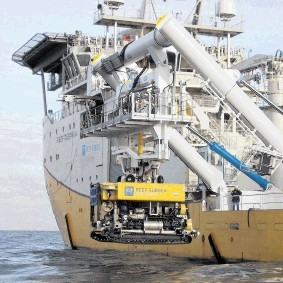
As operators face the dual challenge of sustaining their production levels in mature regions while effectively exploiting the uncapped reserves in growth areas, the potential for subsea capital expenditure for the remainder of the decade has increased dramatically.
However, with this increased demand and requirement to meet project deadlines, while utilising more complex technologies, comes opportunity for complacency to creep in related to the management of health and safety in addition to the vast complexity of operations, logistics and the coordination of multiple activities.
Advances in technology are increasingly being tested and deployed in response to the offshore industry’s demand for solutions to challenges; deeper waters, sustaining production rates in mature developments, boosting flow rates in low pressure reservoirs, accommodating a larger number of fields tied back to host facilities and ensuring the energy and cost efficiency of a project.
But that’s just the hydrocarbons extraction sector. What about other subsea projects, such as windfarms with cable tie-ins and piling activities, sea-bed mining for minerals and potential gas hydrates to name just a few.
Operators are being forced to deliver in remote and harsher locations, their projects requiring sophisticated and expensive equipment and services that can cost significantly more than the standard equivalent.
Gaining efficiency (monetary) can only be achieved by careful evaluation, selection and management of the multitude of service providers required to deliver these projects.
Given all of the above and the current challenges within the industry to meet the demand for experienced subsea competent personnel, health and safety becomes a predominant factor in supplier selection.
Apart from the risk to people, assets and the environment, delays caused by unplanned events can result in severe financial implications to everyone involved in the project.
These often complex subsea developments commonly use multiple services at the same time; diving, platform normal supply, entry in to the exclusion zone, trenching and ROV operations to name but a few, thus requiring control of simultaneous operations (SIMOPS).
However, in many cases, nearby day-to-day asset operations and activities continue as well as other lesser known activities – adding to the complex nature and management of these high-risk operations.
Supply chain selection and evaluation, risk management, interface management – who does what, when and how, are all crucial along with the negative implications of using the wrong control system at the wrong time.
Primacy of systems is the single most appropriate control measure to be defined at the outset of a project and correct management and delivery against this throughout the project is fundamental.
Achieving this with effective due diligence and management must be the primary focus of any subsea management system and as such, the priority of any operator carrying out these activities.
At FQM we have many years’ experience in the design, implementation and management of supply chain selection and the criticality of both interface development and on-going management.
We are therefore well placed to help you make sure that complacency is not a feature of your subsea campaigns.
Brian Minty is an associate director with HSEQ consultancy and training organisation FQM, previously known as Facilitators Quality Management and part of Facilitators International LLP
Recommended for you
